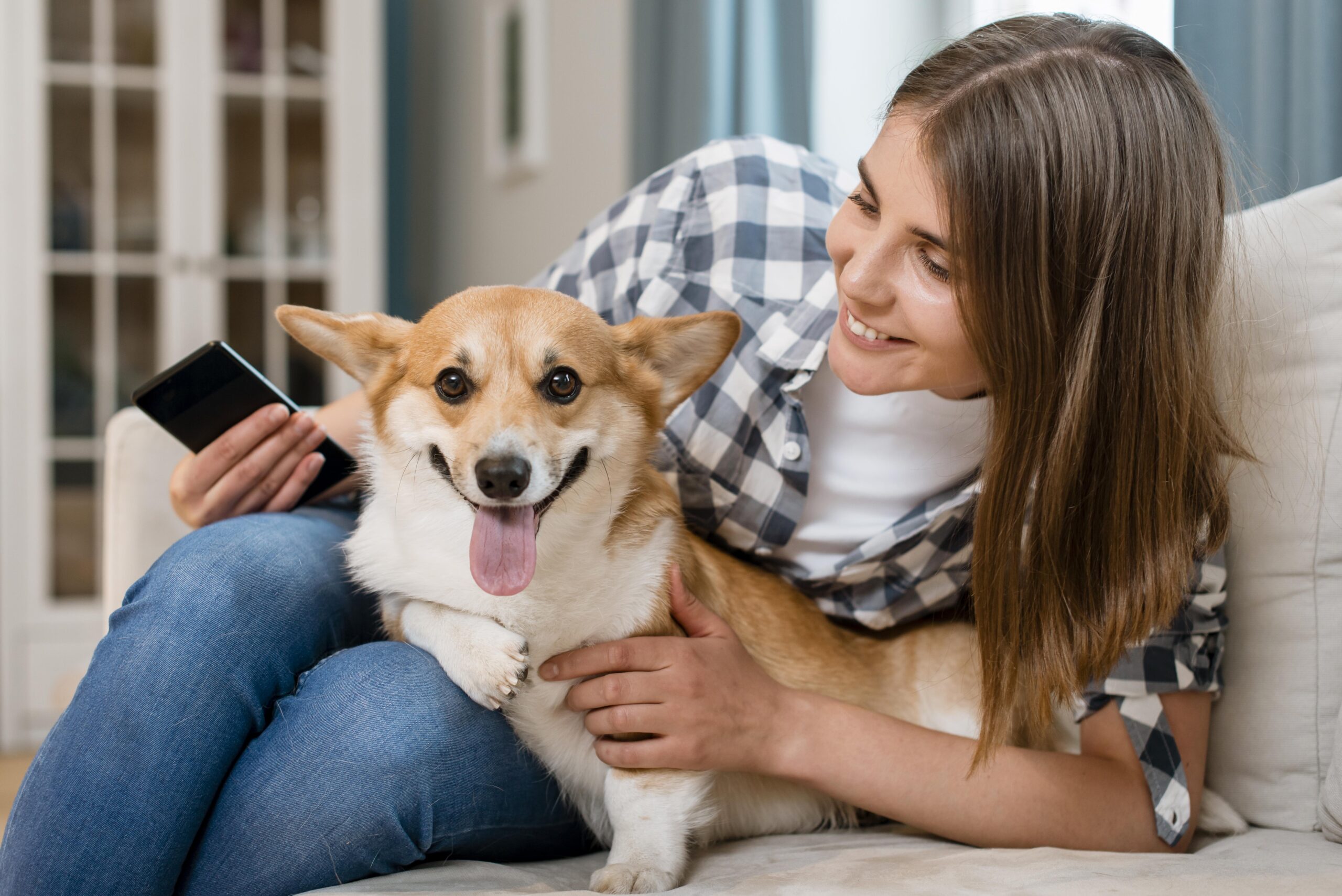As pet owners, we frequently wish our animals could communicate. We’d like to know what brings them joy, what stresses them out, or why they suddenly act out. Even though tone and body language can provide some clues, a significant amount of information is still lost in translation. AI Pet Behaviour Analysis can help with that. AI is enabling us to comprehend pets more thoroughly, more quickly, and more accurately than ever before; it’s no longer science fiction.
What Is It?
AI Pet Behaviour Analysis is the process of tracking, analysing, and forecasting animal behaviour using artificial intelligence technologies. Artificial intelligence (AI) systems can identify trends and flag odd or worrisome pet behaviours using data gathered from wearables, cameras, apps, and smart devices.
Consider it a translator for the unspoken needs of your pet.
AI tools offer data-supported insights rather than speculating as to why your cat is hiding under the bed or your dog is barking more than normal. To help you better understand your pet’s emotional and physical health, these systems examine a variety of factors, including posture, movement, eating patterns, sleep patterns, and even vocalisations.
How It Works
- Data collection: Mobile apps, home cameras, and wearable technology (such as trackers or smart collars) continuously collect data.
- Behavior Mapping: AI models use behavior mapping to compare your pet’s actions to extensive datasets of typical patterns for that species, breed, and age range.
- Alerts and Suggestions: The system alerts you when something is amiss and may even make recommendations for what to do or put you in touch with a trainer or veterinarian.
Some sophisticated platforms can identify changes in gait, pacing, scratching, and tail wagging using computer vision. Others recognise sounds to spot symptoms of pain, aggression, or anxiety.
To explore more about how AI is reshaping pet services, visit our AI Service for Pets guide
Why It Matters
Although they can’t tell us, pets can show us when something is amiss. Early detection of the symptoms is the problem. This is where AI Pet Behaviour Analysis truly shines:
- Early Health Issue Detection: Minor alterations in appetite, movement, or sleep patterns may be early warning signs of disease.
- Managing Stress and Anxiety: AI can identify behavioural indicators of stress well in advance of their escalation, allowing you to take action sooner.
- Training Support: Learn what approaches are effective and receive immediate feedback on training initiatives. Gain a deeper understanding of your pet’s routine and personality with behavioural insights.
What you discover may surprise you! To see how technology is making everyday pet parenting easier, check out this guide on Pawrpose’s AI-powered pet parenting
Examples from the Real World
- A dog owner discovers that their puppy has been agitated at night. The AI tracker indicates poorer sleep quality and faster pacing. The dog has early-stage arthritis, it turns out.
- A cat begins to meow more often. Anxiety that was brought on by a recent move is linked to the vocal pattern by AI analysis.
- AI-powered cameras are used by pet sitters to make sure the pet remains relaxed and goes about its daily activities while the owner is away.

Who is This For?
This technology is for pet owners. However, it’s particularly useful for: Those who are new to pet ownership and are still learning how to interpret animal behaviour, Senior pet owners who are more vulnerable to behavioural and health changes, Pet owners of rescued or nervous animals, and Professionals with hectic schedules who wish to ensure their pet is safe while they are away.
To see how AI is reshaping the pet-parent experience for all these groups, check out this article on 5 Ways AI Is Transforming Pet Parenting in 2025
Limitations to Keep in Mind
Although AI Pet Behaviour Analysis is a useful tool, it cannot take the place of veterinary care or human observation. Consider it a helper that keeps you ahead of the game, not a substitute for your own intuition and consideration. Also, accuracy depends on the quality of data. A dirty camera lens or poorly placed tracker won’t give you reliable results. Always follow setup instructions carefully.
Pet Care’s Future
AI’s application to pet care will develop along with it. Anticipate smoother integration with veterinary services, predictive diagnostics, and enhanced emotional recognition. Imagine using AI to get a veterinarian-approved report sent straight to your phone when your dog exhibits unusual behaviour. At Pawrpose, we think that smart technology can make pets’ and their owners’ lives happier and healthier. AI Pet Behaviour Analysis is revolutionising the field and is just getting started. To learn more about how Pawrpose AI is shaping the future of pet care
Final Thoughts
AI Pet Behaviour Analysis is the way of the future for responsible pet ownership, not just a passing fad. This technology can help you better understand your pet’s emotions, identify problems early, or simply feel more secure while you’re away. AI can help you start speaking your pet’s language even if they can’t speak yours.
Are you prepared to investigate AI-powered pet tools? Take the guesswork out of pet parenting by starting with our carefully chosen suggestions here at Pawrpose, and explore more in our Guide to AI applications for pets
Download Pawrpose Today
Make pet parenting smarter, kinder, and more impactful. Join the movement that’s changing how AI help us to care for our pets, one paw at a time.
Would you like to enhance your journey with our AI-powered pet parenthood app? Pawrpose is available today on Google Play Store and App Store.
FAQ: AI Pet Behaviour Analysis
Q: Is my pet safe to use AI Pet Behaviour Analysis?
A: In agreement. The instruments are non-invasive and made to be comfortable for the animals. The majority involve cameras or wearables that are already widely used in homes.
Q: Does this imply that I will no longer need to see the veterinarian?
A: Absolutely not. AI provides comprehensive behaviour data to support your veterinary visits, but it cannot take the place of expert medical advice.
Q: What kinds of animals can AI analysis help with?
A: Newer solutions are being extended to rabbits, birds, and even horses, although the majority of systems are designed with cats and dogs in mind.
Q: Do I need to be tech-savvy to use it?
A: Not at all. Most platforms are app-based and user-friendly, with easy-to-read dashboards and alerts.
Q: Can AI tell if my pet is happy?
A: To an extent, yes. It can analyze behaviors commonly associated with happiness or stress, giving you valuable insight into your pet’s emotional state.












